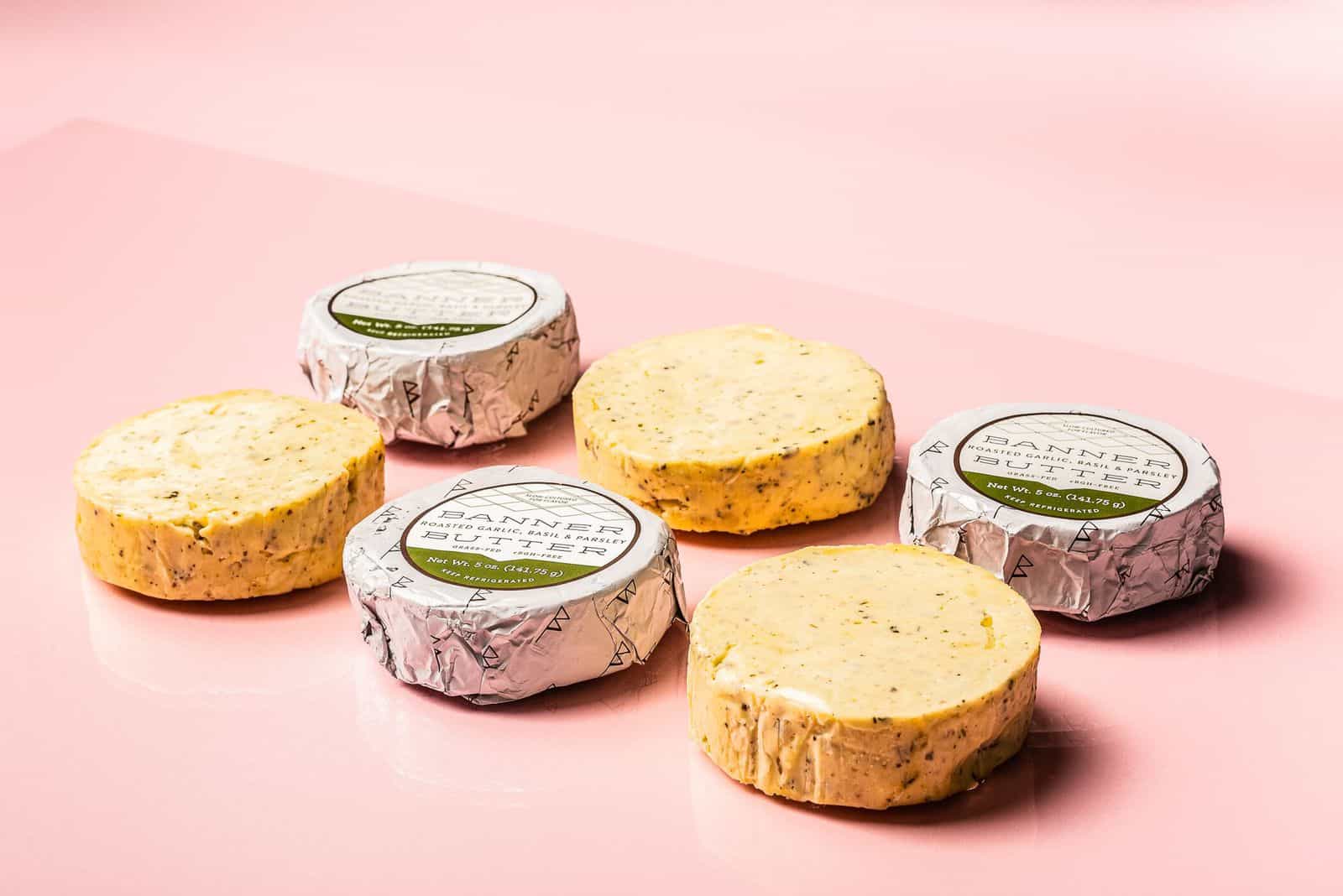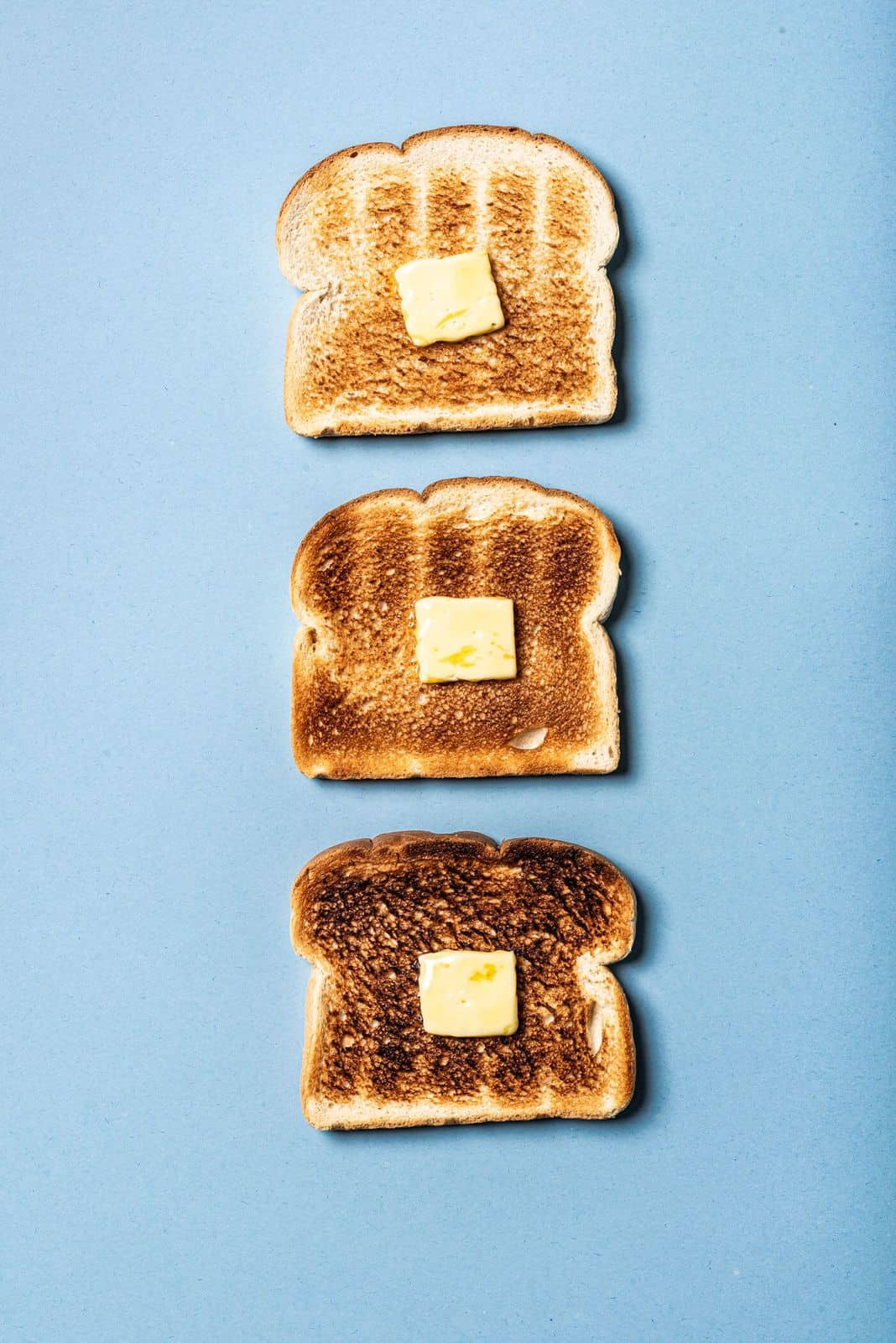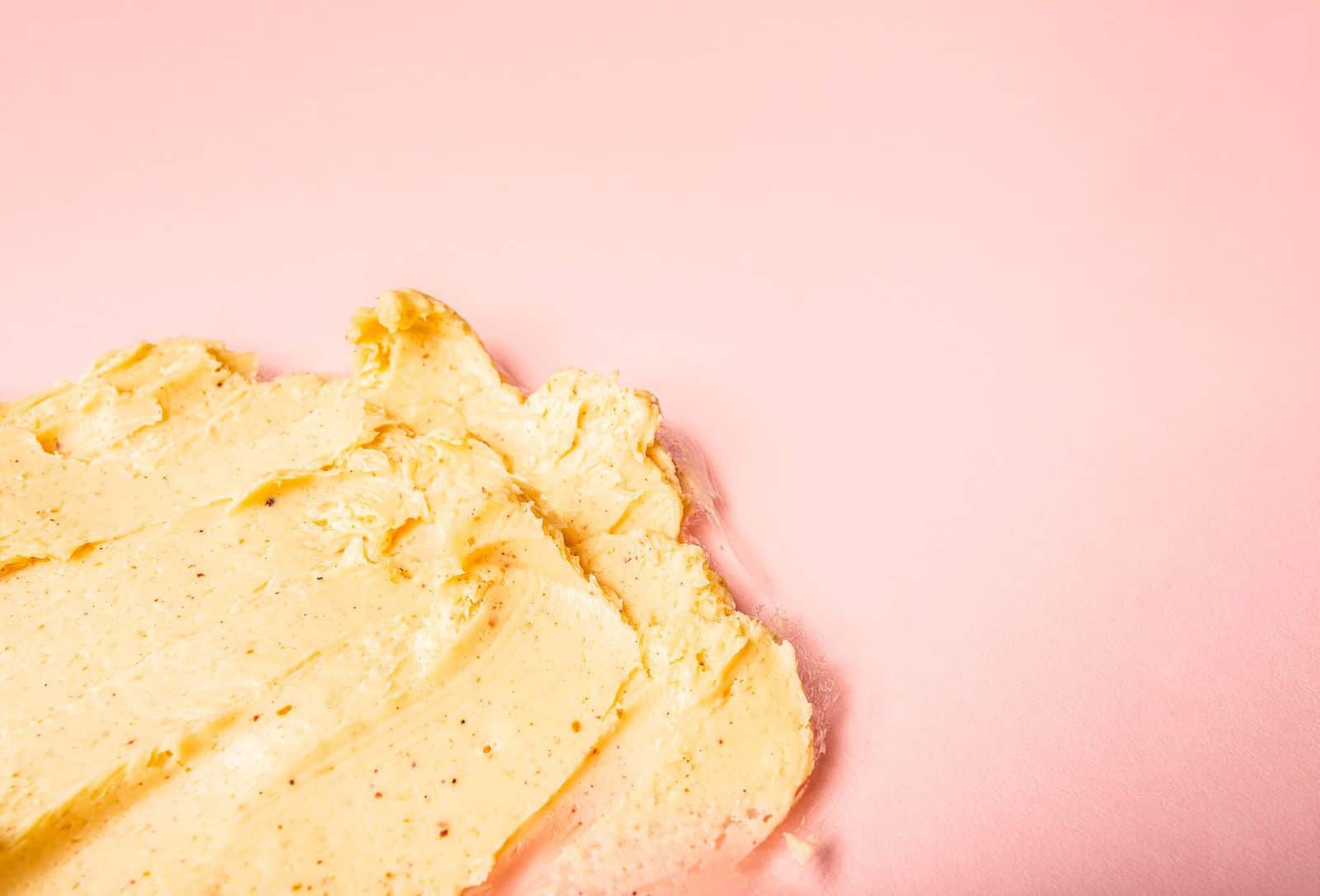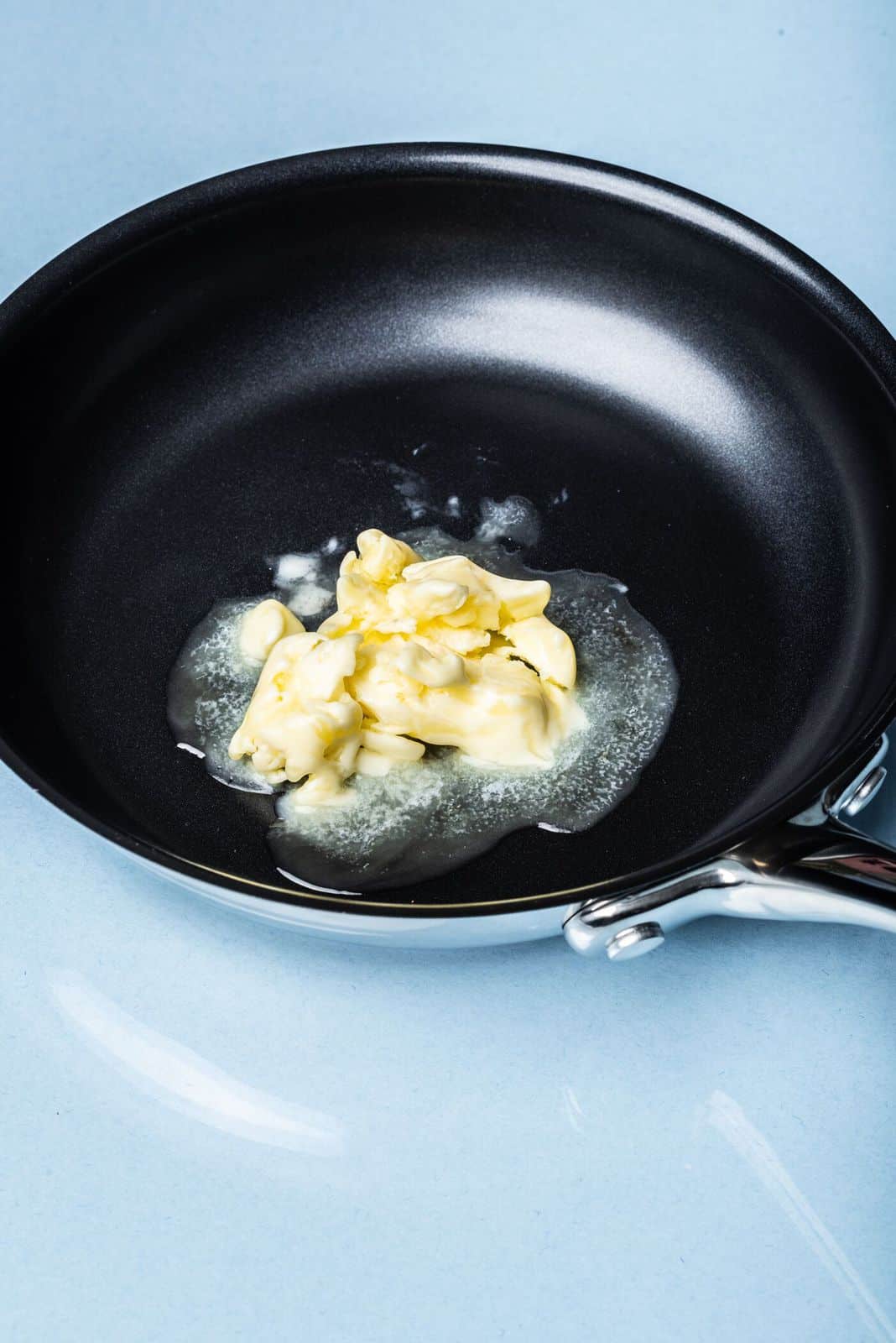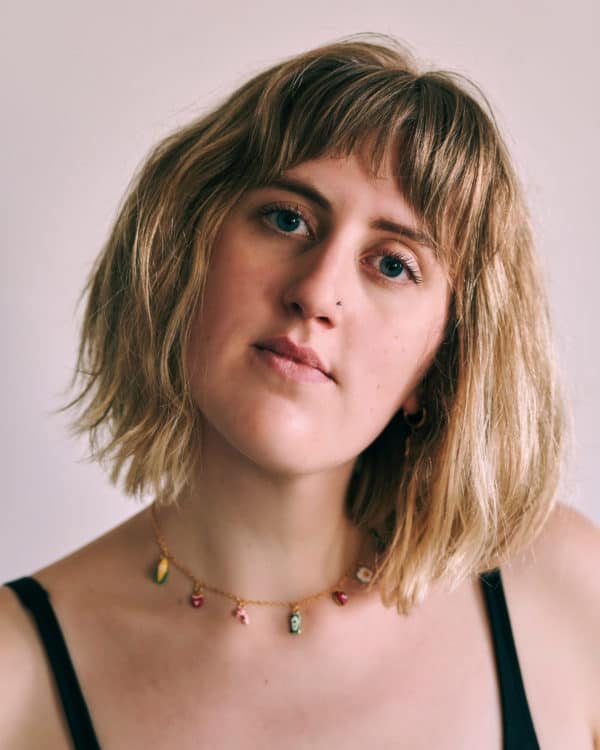
It’s tangy, creamy, and keeps you coming back for more. It’s sweet cream butter’s older, sophisticated cousin who drinks their coffee black and just got back from studying abroad in France. That’s right: we’re talking about cultured butter. “‘Culturing’ and ‘fermentation’ both basically mean growing microbes [to] change [our] food chemically,” says microbiologist Jessica Lee. This means cultured butter and run-of-the-mill sweet cream butter not only taste drastically different, they’re virtually different foods.
Cultured Butter 101
Cultured butter likely came about by accident. “[At traditional European dairies,] farmers would store cream from multiple milkings before combining it all and churning butter,”Lee explains. “Some cream would sit around for hours before being churned, and during that time it would ferment.”
These days, most producers have turned to a controlled process known as lactic acid fermentation, which consists of adding certain lactic acid bacteria (also known as “cultures”) to batches of butter. These are the same bacteria responsible for fermenting other dairy staples like sour cream, yogurt, and cheese, as well as non-dairy edibles like chocolate, pickles, sourdough bread, kimchi, and even coffee. They make the food they’re added to acidic, which in turn makes it an unwelcome environment for many microbes, including ones that make us sick.
Bacteria can either be sourced from the surrounding environment or purchased and added by producers. “It took me about two full years of experimentation before I landed on [a culture] that I loved,”says Hadley Kreitz, co-founder and creamery manager at San Francisco–based Daily Driver. Kreitz had been making butter recreationally for years before she launched Daily Driver this past June. “Butter has always been a fascination of mine,” Kreitz says. “I love how it tells a story.” Daily Driver’s story involves a top-secret culture concoction, which seems par for the course among cultured butter makers.
“Every microbial strain has a unique set of metabolic activities that it carries out,” says Lee. “Changing the microbial cultures [used] for buttermaking will inevitably change the chemistry of the butter, which in turn will change the flavor.” It’s no wonder producers protect their particular recipe—it can make or break a butter.
“Since there aren’t many traditional cultured butter makers in the States, there isn’t much information to aid in the culture selection process…I guess in that regard, it’s kind of a protected recipe,” says Kreitz. “It’s also not just about the cultures,” she adds. “It’s about the cream, the time of fermentation, the temperature, the pH, the type of churn, the hand plasticizing—it’s a whole buttermaking dance!
Taste of Place
When so many factors depend on the surrounding environment, you can bet we’re talking cultured butter terroir.
“I believe the cultures I use bring out the best flavors from this particular cream,” Kreitz says. (She sources from Silva Family Dairy in nearby West Marin.) “[Silva FamilyDairy’s] milk is one of the main reasons I love making butter,” she says. “I love watching the color of the cream change as their pastures change with the seasons…the butter tells the story of their ranch.”
On the East Coast, Georgia’s Banner Butter is imbuing their cultured butters with a taste of the Southeast. “The grass the cows consume, the climate, the soil, the season, and the way the cultures interact with the cream all contribute to something that is uniquely Southern, uniquely American,” says founder Andrew McBath. McBath is passionate about making cultured butter mainstream. “Culturing is the thing that gives butter its amazing subtleties and complexity,” he says.” It also imparts creaminess and silkiness because of the way the bacteria break down the lactose in the cream.” In other words, when it comes to cultured butter, the juice is most definitely worth the squeeze.
But just because you’ve taste done farm’s cultured butter doesn’t mean you can call yourself an expert. “Terroir [matters] so much when it comes to the flavor and quality of fermented foods,” says Lee. “Every cow udder, dairy barn, and butter churn has its own unique microbial population, and therefore every dairy has the potential to make a uniquely flavored butter.
Producers may select their cultures for any number of reasons—maybe they’re looking for a velvety, movie theater–popcorn quality, so they use Lactococcus lactis subsp. diacetylactis, named for its high levels of diacetyl.
Or perhaps they select cultures with European prestige, like the mix McBath uses from The Netherlands and France. Still, the taste of place shines through regardless.
“You can tell so many things about the cows—their breed, their diet, where they come from—just from looking at and tasting [our cultured butter],” says Kreitz. If cultured butters tell a story, as Kreitz says, then it stands to reason that the tale of American-made cultured butter is just beginning.
Tasting Notes
Roasted Garlic, Basil & Parsley
Atlanta, Georgia
This 5-ounce round packs a punch. It’s just as herbaceous as it is garlic-forward, sort of like a piece of garlic bread dipped in homemade chicken broth.
Monets Garden
Lyons, Colorado
Floral and sweet with a hint of cinnamon, this velvety cultured butter tastes like a fresh-baked sugar cookie. It comes in different sizes so you can go big or go pocket-sized (seriously, they’ve got minis available).
Cultured Butter
Fayston, Vermont
Ploughgate churns out this creamsicle-like cultured butter with slight notes of citrus and a smooth, dreamy texture. It’s also super salty and has some definite buttered popcorn flavor going on.
Cultured Butter with Sea Salt
Bantam, Connecticut
Consider this the gateway butter for all cultured butters—it’s fatty and grassy, with a hint of sweet cream.
Herbed Rose
Duvall, Washington
This butter gets its flavor from blending classic French herbs with dried rose and lavender petals. It’s peppery, heavy on the rosemary, and not too flower-forward.
Cultured Butter
San Francisco, California
Lightly salted and waxy in texture, these blocks taste like asparagus without the pungent smell.
Cultured Butter with Sea Salt Sticks
Websterville, Vermont
Clocking in at 82 percent butterfat, Vermont Creamery’s cultured butter sticks taste like buttermilk with a smooth, salt-crystal-free texture.
Cook with Cultured Butter
PUT IT ON POPCORN…
“You can substitute our cultured butter in place of uncultured butter with no difference in amount or weight. Though we may have a heavy hand…because butter just makes everything better!” —Brie Best, Cherry Valley Dairy sales and marketing
SAUTÉ CHERRIES…
“Monet’s Garden butter has lavender, rose petals, nutmeg, and vanilla, all of which [add] lovely nuances to the cherry. I prepare a ricotta whip with vanilla, agave, and lemon oil and lay the sautéed cherries on top.”—Shauna Lee, Bella La Crema founder
TOSS WITH PASTA…
If you’re in the mood for carbs, take Banner Butter founder Andrew McBath’s suggestion: “I love a good cacio e pepe.”
CULTURED BUTTER BYPRODUCTS
Ever wondered where buttermilk comes from? The real stuff is a byproduct of the buttermaking process; It’s the liquid left over after churning milk into butter. Arethusa Farm is a farm, dairy, restaurant, and bakery located in Litchfield, Connecticut, that makes good use of this byproduct. “All of our buttermilk goes to our restaurant, Arethusa al Tavolo, and our bakery, Arethusa a Mono,” says dairy manager Erin Hubbard. “I know the restaurant uses it to tenderize a lot of its proteins—the acidity and flavor are great additions to a lot of recipes.” Most commercial buttermilk is made by adding cultures to regular milk. “There are little bits of butter floating in [Arethusa Farm’s buttermilk],”explains Hubbard. “That’s how you can tell it’s [the real deal].”
CULT-ured Butter
Animal Farm is a small dairy and farmstead creamery located in Orwell, Vermont, and its cultured butter has a serious following. The majority of their product is sent to the likes of Thomas Keller (of The French Laundry fame) and Barbara Lynch (Boston’s Menton, No. 9 Park, and more). If you’re searching fora block to bring home, check out Middlebury Natural Foods Co-Op in Middlebury, CT.



